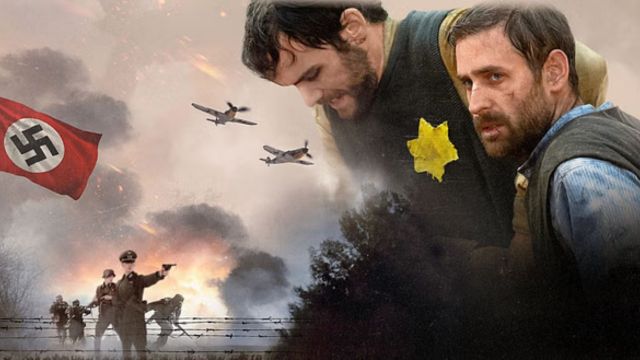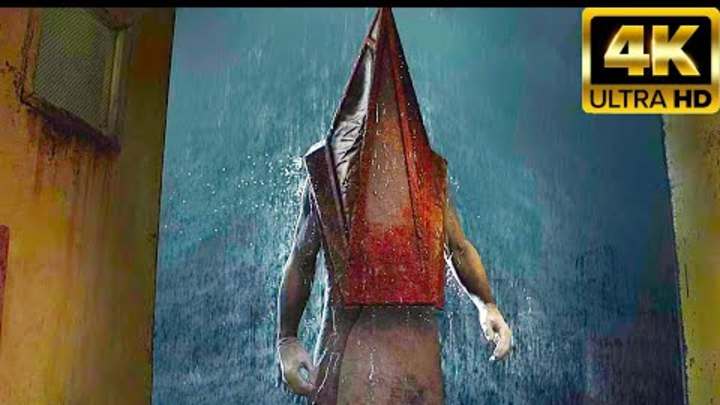In addition to depicting a heartbreaking moment from World War II, Lior Geller’s The World Will Tremble (2025) serves as a timeless reminder of the human spirit’s tenacity in the face of the darkest atrocities committed by humanity.
The film’s conclusion offers a sombre yet potent interpretation of survival, trauma, and testimony, and it is based on the true experience of two Jewish prisoners who managed to escape the Chełmno extermination camp in Nazi-occupied Poland. In order to ground the film’s finale in historical context and cinematic impact, we decode the film’s last scenes and investigate its deeper significance.
Historical Foundations: The Real Story Behind the Film
Operating from December 1941 until April 1943 and then again for a brief period in 1944, Chełmno was the first Nazi extermination camp. There, gas trucks killed some 200,000 people, primarily Jews from the Łódź Ghetto. The Sonderkommando, which was tasked with handling the bodies of other victims, included prisoners like Michał Podchlebnik and Solomon Wiener, who were portrayed in the movie.
Their statement and unusual escape were among the first first firsthand reports of the industrial-scale genocide being carried out. The conclusion of The World Will Tremble is especially noteworthy because of this real-life setting.
The Ending Scene: What Actually Happens
As Nazi patrols pursue them, Solomon and Michał manage to escape the camp in the film’s climax, making their way over the icy terrain of Poland. It is emotionally and physically taxing for them to survive. The BBC and The New York Times broadcast the news when they eventually get in a secure area and testify to Polish resistance members, marking the first recognition of the atrocities on a global scale.
There is no sense of relief or victory in the last scene. Solomon looks solemnly at a shattered fence post, which represents the mental and physical limit he crossed. That silent moment captures the weight of witnessing something the world is only now starting to comprehend, as well as survivor’s shame and memories.
Interpretation 1: The Weight of Witnessing

The World Will Tremble’s conclusion is a burden passed on rather than a “happy” escape. Despite their survival, Solomon and Michał still bear the scars of those who perished. Silence is more powerful than words in that last shot. In Hebrew, “Zakhor” means “Remember.” It is an epitome of this word.
Despite being revolutionary in history, Allied soldiers did not immediately embrace their evidence. Truth doesn’t always rock the world in an instant; sometimes it reverberates for decades. This highlights a painful reality.
Interpretation 2: The Title’s Meaning — Why “The World Will Tremble”?
There are layers to the title. On one level, it implies the horror that the world would experience if it discovered Chełmno’s truth. On the other hand, it’s almost hilarious because the globe did not shudder quickly enough even when the facts were made public.
The title turns into a challenge, an appeal to the next generation to react to evil in a new way. The statement made by actual survivor Jan Karski, “I reported what I saw, but I don’t think the world was ready to believe me,” is also echoed in this passage.
Interpretation 3: Survivorship and Trauma
Survival does not feel like freedom to Solomon. His face remains in the last frame, hollow rather than victorious. It’s a reminder that leaving hell doesn’t mean forgetting it. A major theme in Geller’s conclusion is the persistent trauma that survivors frequently experience. By avoiding a “celebration,” he honours the difficulty of surviving a massacre.
Psychological research demonstrates that Holocaust survivors bear PTSD, generational trauma, and frequently a burden of silence which the movie discreetly supports.
Interpretation 4: Resistance as Identity
Subtle resistance to erasure is another element that is inscribed in the conclusion. The Nazis wanted Chełmno to disappear completely, leaving no records, no bodies, and no stories behind. Solomon and Michał undermine that intention by fleeing and sharing their story. The conclusion is a subdued yet significant act of rebellion: speaking up was a weapon, and surviving was resistance.
Testimonies from survivors who felt obligated to speak for the millions who were unable to do so, as well as for themselves, are consistent with this.
Cinematography: How Visuals Shape the Ending

The closing scene’s ambient calm, extended takes, and subdued colors transport the audience to the protagonists’ inner states. Geller steers clear of the dramatics; there are no heroic gestures or swelled melody. Rather, the camera hovers, almost inviting viewers to join in the discomfort. In order to prevent the spectator from emotionally escaping the tragedy, this directing approach is frequently employed in Holocaust films, most notably by Steven Spielberg in Schindler’s List.
Critical Reception of the Ending
The conclusion has been hailed by critics as “one of the most emotionally ethical portrayals of Holocaust escape in modern cinema” and “hauntingly restrained.” “Geller’s ending doesn’t exploit pain — it honours truth,” writes Keith Garlington of Keith & the Movies.
The film was lauded by Loud and Clear Reviews for “letting history echo through silence — avoiding melodrama in favour of stillness.”
Conclusion: Why Today’s End Is Important
The World Will Shudder concludes with weight rather than answers. It invites us to dwell with the past as active participants in remembering rather than as passive observers. The cost of truth, the difficulty of surviving, and our duty as witnesses to testimony are all captured in the film’s closing minutes.
This movie and its conclusion are more than simply history in a world today struggling with denialism, disinformation, and genocide. It serves as a duty, a reflection, and a warning.
Want more thought-provoking film breakdowns and cultural deep dives? Subscribe to Cobble Hill Blog for expertly crafted articles, cinematic insights, and stories that stay with you long after the credits roll. Let’s explore the narratives that move the world — one frame at a time.













